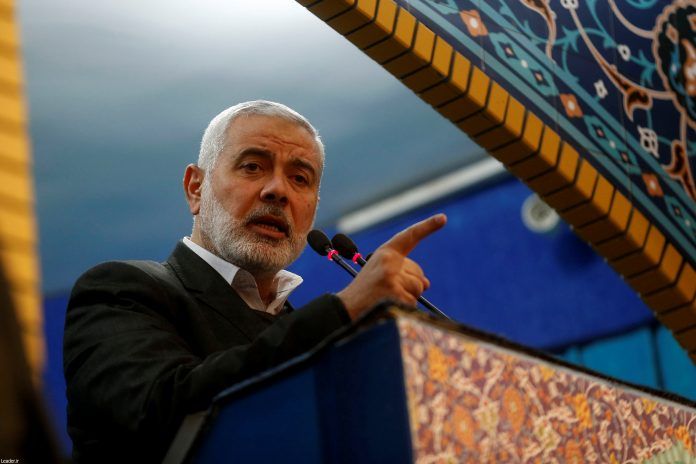
By Parisa Hafezi
DUBAI, Jan 6 (Reuters) – Iran‘s leaders have promised to avenge the killing of General Qassem Soleimani, commander of Iran‘s Revolutionary Guards Quds Force, by the United States.
Here are some of Tehran’s options:
MILITARY POWER
Iranian Supreme Leader Ayatollah Ali Khamenei and U.S. President Donald Trump talk tough but neither have indicated an interest in all-out war although the possibility of military confrontation cannot be ruled out.
If Khamenei calls for restraint, he could look weak at home and among regional proxies. So he may opt for small-scale retaliation.
Karim Sadjadpour, senior fellow at the Carnegie Endowment for International Peace, said Khamenei must carefully calibrate the reaction. “A weak response risks losing face, an excessive response risks losing his head.”
A U.S. Defence Intelligence Agency report in December said Iran relies on three main military capabilities – its ballistic missile programme, naval forces that can threaten navigation in the oil-producing Persian Gulf region, and militia proxies in countries such as Syria, Iraq and Lebanon.
Iran says it has precision-guided missiles, cruise missiles and armed drones capable of hitting U.S. military bases in the Persian Gulf and reaching Tehran’s arch-enemy Israel.
Tehran or its proxies could attack oil tankers in the Persian Gulf and Red Sea, shipping routes for oil and other trade linking the Indian Ocean with the Mediterranean via the Suez Canal.
BLOCKING THE STRAIT OF HORMUZ
A military confrontation or heightened tensions could disrupt shipping via the Strait of Hormuz, through which one-fifth of the world’s oil production passes. Any interruption could drive up oil prices sharply.
Iran cannot legally close the waterway unilaterally because part of it is Oman’s territorial waters. However, ships pass through Iranian waters, which are under the responsibility of the Islamic Revolutionary Guards Navy.
Tehran could use missiles, drones, mines and speedboats to confront the United States and its allies. U.S. officials say closing the Strait would be crossing a “red line” and America would take action to reopen it.
ASYMMETRIC TACTICS AND PROXIES
U.S. forces in the Middle East could be endangered. Iran mainly relies on asymmetric tactics and its proxies to counter more sophisticated U.S. weaponry.
Iran has passed on weaponry and technical expertise to allies. Yemen’s Houthis have used Iran-made missiles and drones to bomb airports in Saudi Arabia.
The United States and Saudi Arabia accuse Iran of attacking oil tankers near the Strait of Hormuz last year and say Tehran was behind attacks on Saudi oil facilities. Tehran denies this.
Iran-backed militias in Iraq have attacked bases where U.S. forces are located. In June, Iran downed a U.S. drone with a surface-to-air missile, bringing to two sides to the brink of direct conflict.
TIMING
Iran is unlikely to rush into action, said Ali Alfoneh, senior fellow at the Arab Gulf States Institute in Washington.
“Iran has no choice but to strike back and retaliate for assassination of Major General Soleimani,” he said. “But the Islamic Republic is patient and the timing and nature of that strike is not yet known to us.”
IRAN‘S LONG REACH
Iran and its allies could project power beyond the region.
In 1994, a member of the Lebanese movement Hezbollah bombed the Argentine Jewish Mutual Aid Society building in Buenos Aires, killing 85 people. Argentina blamed Iran and Hezbollah for the attack. They deny any responsibility.
Argentina also blamed Hezbollah for an attack on the Israeli embassy in Buenos Aires in 1992 that killed 29 people.
“What is more likely is sustained proxy attacks against U.S. interests and allies regionally and even globally. Iran has a long history of such attacks in Europe, Africa, Asia, and Latin America, with mixed success,” Carnegie’s Sadjadpour said.
DIPLOMACY NOT CONFRONTATION
Iranian leaders have previously kept the door open to diplomacy to achieve their aims, especially when its economy has been squeezed by U.S. sanctions.
“Iran and America have worked together in the past, in Afghanistan, Iraq and other places. They have common interests and common enemies. A military confrontation will be costly for both sides. But diplomacy can solve many problems and it is an option,” said a senior regional diplomat.
Iran has ruled out any talks with the United States unless it returns to a 2015 nuclear deal and lifts all sanctions it reimposed on Tehran after quitting the pact in 2018.
U.S. Secretary of State Mike Pompeo said after Soleimani’s killing that Washington was committed to reducing tensions.
“While many are predicting World War III, the last 40 years of Iran‘s history reflect that what’s paramount for the Islamic Republic is its survival. Tehran can ill-afford a full-blown war with the U.S. while facing onerous economic sanctions and internal tumult, especially without Soleimani,” Sadjadpour said.
(Additional reporting by Babak Dehghanpisheh; Writing by Parisa Hafezi; Edited by Angus MacSwan)

